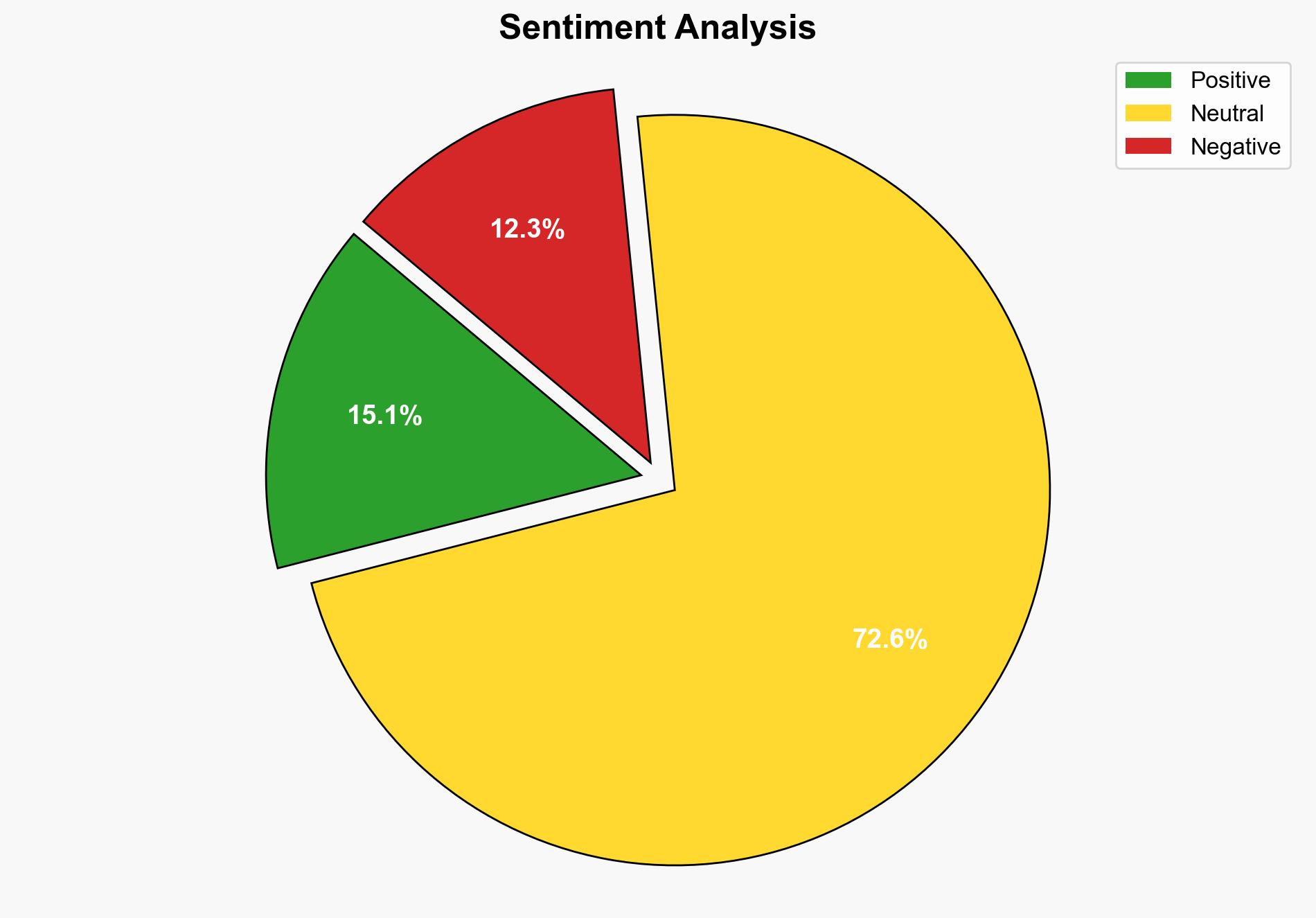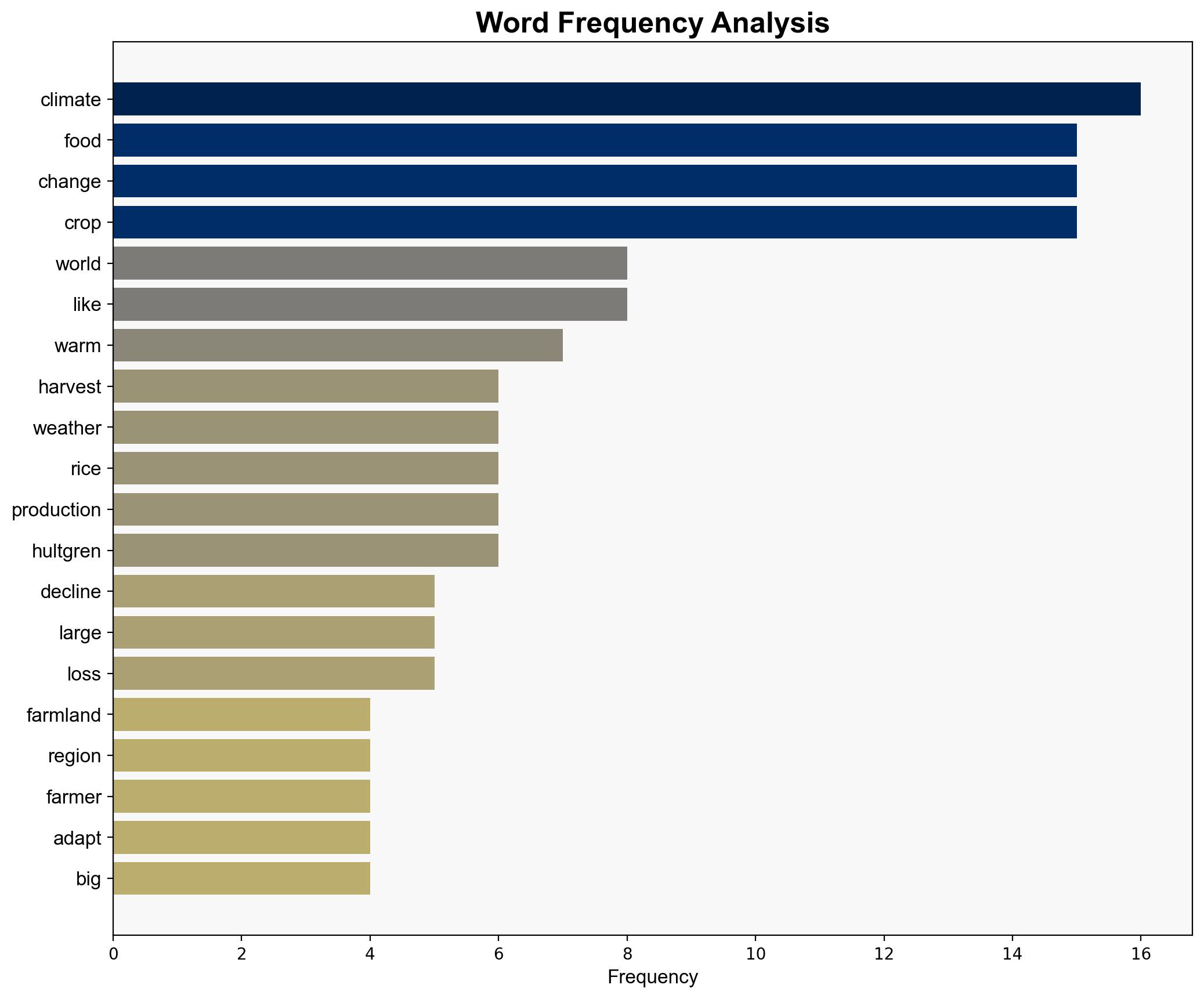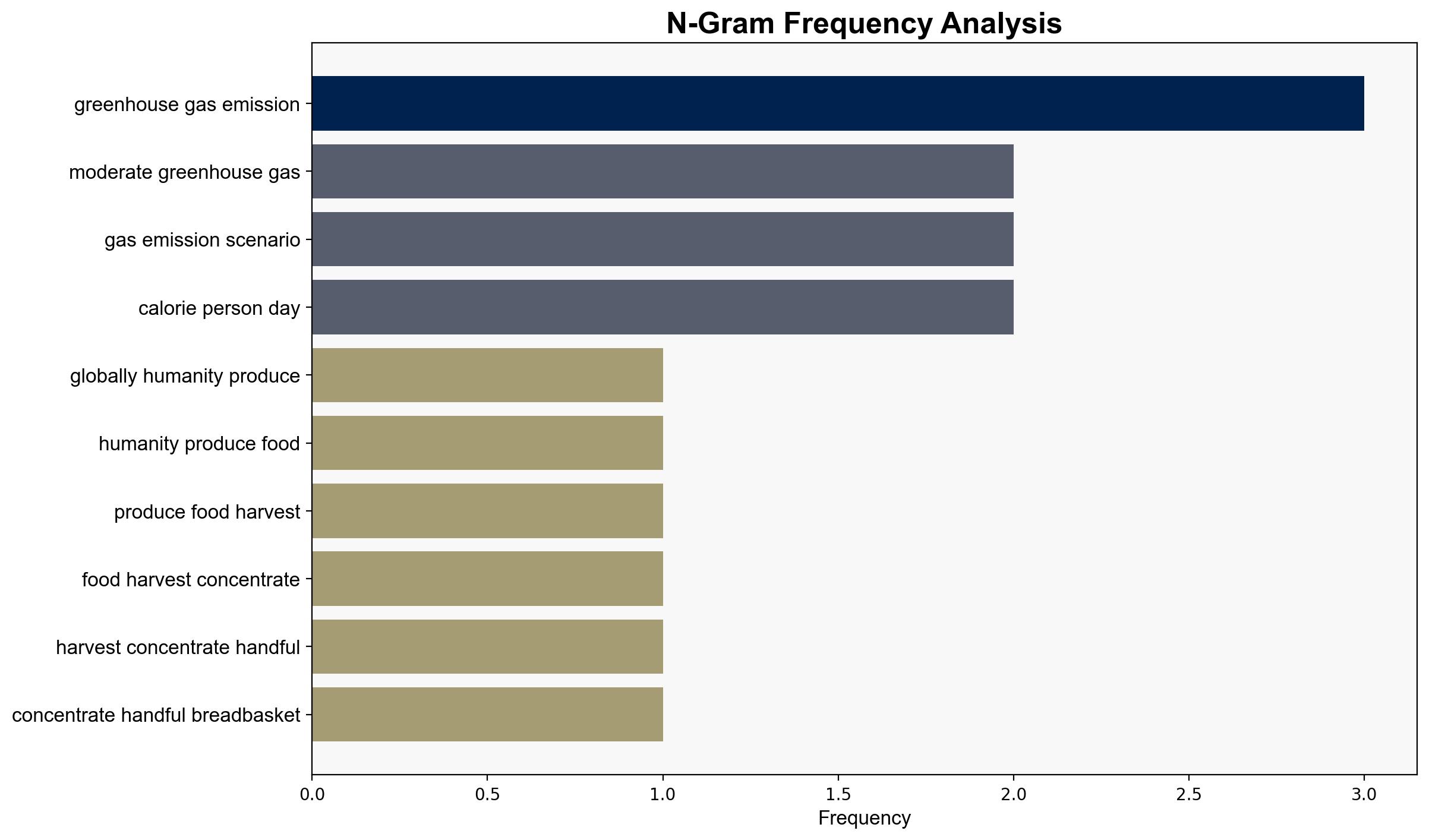Were producing more food than ever before but not for long – Vox
Published on: 2025-06-18
Intelligence Report: Were producing more food than ever before but not for long – Vox
1. BLUF (Bottom Line Up Front)
Climate change poses a significant threat to global food production, with key staple crops projected to decline by up to 25% by the end of the century under moderate greenhouse gas emission scenarios. This decline could exacerbate global hunger, increase food prices, and create geopolitical tensions. Immediate adaptation strategies are necessary to mitigate these risks.
2. Detailed Analysis
The following structured analytic techniques have been applied to ensure methodological consistency:
Causal Layered Analysis (CLA)
Surface events indicate a decline in crop yields due to extreme weather patterns. Systemic structures reveal dependencies on a few key breadbasket regions, such as the Midwest in the United States, which are vulnerable to climate impacts. The worldview suggests a reliance on technological adaptation and infrastructure investment. The underlying myth is the belief in the inexhaustible productivity of fertile regions.
Cross-Impact Simulation
The decline in food production in major exporting countries like the United States, Ukraine, and Russia could lead to increased global food prices, affecting food security in import-dependent regions. This may result in political instability and increased migration pressures.
Scenario Generation
Scenarios range from successful adaptation through technological innovation and international cooperation to severe food shortages and geopolitical conflicts over resources. The most likely scenario involves partial adaptation with significant regional disparities in food security.
Bayesian Scenario Modeling
Probabilistic models suggest a high likelihood of increased food insecurity if current adaptation measures are not accelerated. The probability of severe food shortages is contingent on the pace of climate change and the effectiveness of global adaptation strategies.
3. Implications and Strategic Risks
The decline in food production presents a strategic risk to global stability. Economic dimensions include potential spikes in food prices and trade imbalances. Politically, food scarcity could lead to unrest and conflict in vulnerable regions. Systemic vulnerabilities include the over-reliance on specific regions for staple crops and inadequate adaptation measures.
4. Recommendations and Outlook
- Accelerate investment in agricultural research and development to enhance crop resilience.
- Promote international cooperation to share adaptation technologies and practices.
- Implement policies to diversify food sources and reduce dependency on vulnerable regions.
- Scenario-based projections:
- Best case: Successful global adaptation reduces food insecurity.
- Worst case: Widespread food shortages lead to geopolitical conflicts.
- Most likely: Mixed outcomes with regional disparities in food security.
5. Key Individuals and Entities
Andrew Hultgren
6. Thematic Tags
climate change, food security, global agriculture, adaptation strategies




